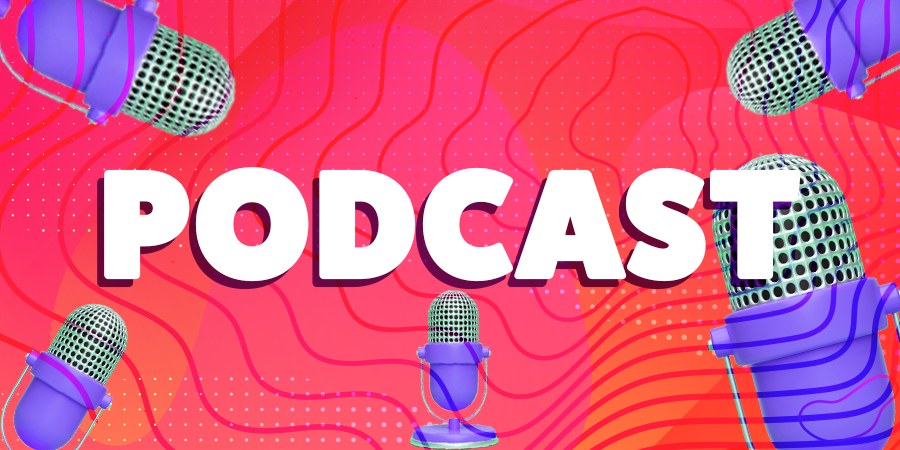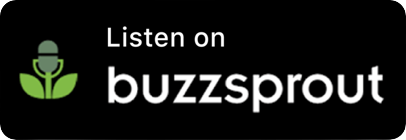Ep 65: Serious Social – Back to old school social
If you’re after more know-how to break the social boring, subscribe now.
Full Transcript
– Hi, welcome to Serious Social Live. Do you know, at Immediate Future, we’ve been going live on Friday for over 18 months now. And one trend is clear, nothing stayed the same. I’ve actually got the builders in today, so if you hear some banging, that’s what that is. But that doesn’t mean we should only be chasing the next big thing. Sometimes, the new trends mean looking back to see what worked in the past and how it might work again in today’s new social media landscape.
So I’m going to talk about going back to some old school social, much of which is rooted in good old-fashioned marketing too.
When Immediate Future started 17 years ago, the world was, it was very different. It wasn’t called social media for starters, it was a collection of media, Web 2.0 they called it. And I’m going to pop up a, when I find my mouse, a slide, this guy coined the phrase, Web 2.0, Tim O’Reilly. It represented the post kind of .com bubble burst with the rise of sites like, Flickr, Wikipedia, Myspace, remember Myspace? Blogs and a plethora of message boards, some of which blossomed like Mumsnet and MoneySavingExpert. And some of which still huddle in the corners of the web, serving specialist communities and groups that are still enjoying the exchange.
So, what can we learn? How can we go back to benefit the future?
See, back in the day, every platform was treated like social media in its own right. Social was still very experimental and there was much we would learn over the coming years. For instance, we now know that content needs to be social first. But one thing we did understand back then was that audiences on each platform were there for different reasons. The Myspace groups wanted music, the Flickr photography, the Second Life, well, Second Life was just weird.
Content was directed specifically at each community. It wasn’t copied from one to the other. The social ecosystem was not what it is today where people belong to five or six networks. Partly because many of the formats were very, very different, but also because it was a given that each community was distinctive, the audiences behaved differently, liked different things, and communicated in different ways.
Now, with the platforms copying each other, many of the formats are so similar, but audience behaviours and mindsets are not. Audiences are still different across the channels. Visuals and copy needs to be tilted for each platform. You just can’t get away with crossposting the same content everywhere.
As part of any campaign, what mattered on social was the people back then, don’t think that’s changed really. And the amazing new way that we had of accessing them and back then, paid was still nascent or just non-existent. In fact, it was quite a while before there were even brand pages on Facebook. A brand had to be a person. So, the approach tended to be grounded in influence, advocacy, amplification, and UGC, user-generated content.
Much of this new marketing was based on a book, which I’m just going to drag out. This is my original copy. A book called “The Cluetrain Manifesto” published in 2000, the work examines the impact of the internet on marketing, claiming that conventional marketing techniques are rendered obsolete by the online conversations that consumers are having.
And that more importantly, companies needed to join.
By 2006, we’d got into the swing of it. And there’s another seminal book, which is “Connected Marketing”. And I’ve got all these notes in here by the way which did my head in when I looked at it again. And it’s a beautifully collated book by Justin Kirby and Paul Marsden, who shaped the approach to viral bars and word of mouth. In it there’s a chapter dedicated to, wait for it, e-fluentials, the online opinion leaders, everything had E in front of it back then. This was old fashioned influence, people who had authority, people who changed behaviours, people who made a difference to their network and community.
Take a look at this, I’m just going to pop this up. Take a look at this. This is a network of influence on the topic of sustainability created by Analytica. This is true influence gauged by looking at social influence, as well as authority, by analysing how much influences are referenced on social. It allows you to see the weak ties and strong ties in a network of conversations.
Of course, now we have tech like on Analytica, back then much of this was done manually. And research shows that non-celebrity social media users are 10 times more likely to influence in-store purchase than celebrities. What was, and still is, key is that influence is tied to topic and rarely just about popularity. Instead, popularity, or more realistically reach and frequency, was driven by UGC, advocacy, and a brilliant term, the seeding for buzz. Don’t use that anymore, thank heavens.
Today, 90% of people want the brands they support to be authentic. And 79% of people say, UGC highly impacts their purchase decisions. UGC in authentic, genuine content is back in play. Now, coupled with paid or creator driven partnerships to garner reach is driving trends that Belle was talking about with me the other day, TikTok made me buy it. So, these trends are being carried forward by user-generated content. And today, it’s driving a return on investment. This nice example from Bart’s, the swimwear/beachwear brand, shows how their customers style their products. They run these UGC campaigns that showed how their customers were actually using the products. And the result was a 9.19% increase in conversion rate and a 20.5% increase in average order value, who doesn’t want that?
So UGC is definitely back in fashion. But it isn’t just getting users to create content. Back in the early days, reviews were crucial. The first online reviews made an appearance in 1999. At first, they tended to be just on websites like eBay. Then there came these review sites, Epinions, RateItAll, and Deja, which later became Google Groups. By the noughties, Yelp, Amazon, Google, Facebook, and TripAdvisor took the lead. And they are essential today.
I’m going to show you this bit of data that Brandwatch sent a couple of weeks ago, which shows of the insight on restaurant reviews. The number of reviews posted per day overtook the number of reviews in April, God, I’ve got to get my teeth in, between 2017 and 2019. And it has been growing ever since. It’s that, this way round, that blue line, the blue line shows how much reviews matter and the fact that they’re more positive. 91% of 18 to 34 year olds trust online reviews, as much as personal recommendations, and 93% of consumers say that online reviews influence their purchase decision. We need to be asking for reviews, responding to them, being transparent and open with them, and most importantly, we need to be sharing them.
So, let’s turn to creative. Without paid and shiny new formats, creativity had to lead the way. There is so much to talk about when it comes to creativity and I haven’t got the time today to bother you all day with it, but there’s two that I think we should urgently discuss that we should bring back from those early days.
By 2008, brands realised that they just couldn’t be part of the social mix if they talked, behaved and acted like corporations. Audiences wanted more, businesses got serious about personality. And this book, which let me dig this one out, came into the limelight. Oh, where are we? This way? There, “Personality Not Included” by Rohit Bhargava. And it speaks about creating powerful conversations with your customers and getting them to choose your brand. In the noisiest social of 2021, you need a personality to even hope to achieve stand out. That means defining the character, value, tone, and language of your brand, and then differentiating and more importantly, creating a voice on social. Let me show you this example, because back in, this is 2012, God, it feels like yesterday, but anyway.
Back in 2012, Bodyform showed how well it works, especially when the leadership team moves front and centre to the personality. And although this campaign is a bit disputed as to whether the original Facebook comment that was complaining about sanitary towels was genuine or not, this video response from Bodyform CEO was definitely a hit with over 5.6 million YouTube views. It was funny, it was different, it caught the mood and they had personality. And there’s some lovely examples, you see it everyday. Merriam-Webster taps into puns, wordplay, wit, and a wicked sense of humour bringing the dictionary to life. They’re just fun, they’re not boring, they’re interesting, you want to follow them. And research shows 72% of consumers are more likely to purchase from a brand if their social media image is humorous. But they also want friendly, they want genuine, and they want honest personality because humour is not for everyone, I know that. But you need to have some form of personality and not just be the corporate face.
So, work hard to grow your brand personality, give it shape that goes beyond an avatar or a collection of words.
The second urgent approach to creativity we need to discuss is the need to entertain. Stand out is essential for grabbing attention. The thumb-stopping content that gets audiences to look is important, but once you have them, you need to keep them engaged.
That means thinking about what matters to them. And right now, for many brands, there is a desperate need, a desperate need, to be interesting, entertaining, intriguing, and of the moment.
Back in 2004, I can’t believe I’m saying this, Burger King nailed the pop culture of the moment. The idea was new, it was interactive, it was hilarious. Subservient Chicken caught the buzz of the internet. At its height, it received 8 million visits a day. Okay, not wholly on social, but at its core, it had this wow factor, the interest and the shareability. The most popular features in social ads are entertaining content at 41%, which actually beats discounts at 37%. So, go figure. And on social, that also means reading the room, understanding that culture, that zeitgeist, and that’s exactly what This Girl Can did. Let me show you this one by Sports England who understood the mood of the nation. 13 million viewed it online. And they got a social reach of 23 million. I mean, that’s reach. Of course, these days we have an array of formats and styles to choose from, video is more ubiquitous, we can shop in social, memes are now part of the vernacular and you don’t have to explain them to anybody. And we create so much content at the flick of an app, but that’s part of the problem.
Social was simpler when we started. But it was also not about throwing volumes of posts into the social ether. Campaigns were more likely to be integrated. Creative took time and enabled the investment of something of value to your audiences.
We need to get back to producing content that our audiences actually want to see, not just shouting about products, but a piece of the branded voice. Its core message, its values, tell those stories and the sales will happen. It’s what we did when social first started. Or maybe I have rose-tinted specs on.
Well, there’s certainly a lot to forget too. Poking Facebook friends, throwing sheep, or the many, many Farmville invites that I seem to have got, the like pages with the arrows going. “Like this page”. and the clickbait headlines. Actually, there are still clickbait headlines, but you know, less, we hope. But let’s not throw the baby out with the bathwater. We need to take our time, create quality social content that actually will have impact in the noisy world of social. And a few of the techniques in the past might help us see opportunity in our future. The smarts though are in marrying those modern day, those past behaviours to the modern day. Things like understanding how we’ve changed, let me show you this very interesting piece of data, there we go. From GWI, which shows politics and environmental issues are now a bigger part of the online conversation for young people in 2012.
So, the reality is that we have to now follow the data, but also find our personality, encourage our customers to post and write reviews, and create content that your audiences actually want to see.
Thank you for joining me in my trip down memory lane. It was fun. Tune in next week for another Serious Social and have a great weekend. Thank you, bye.



